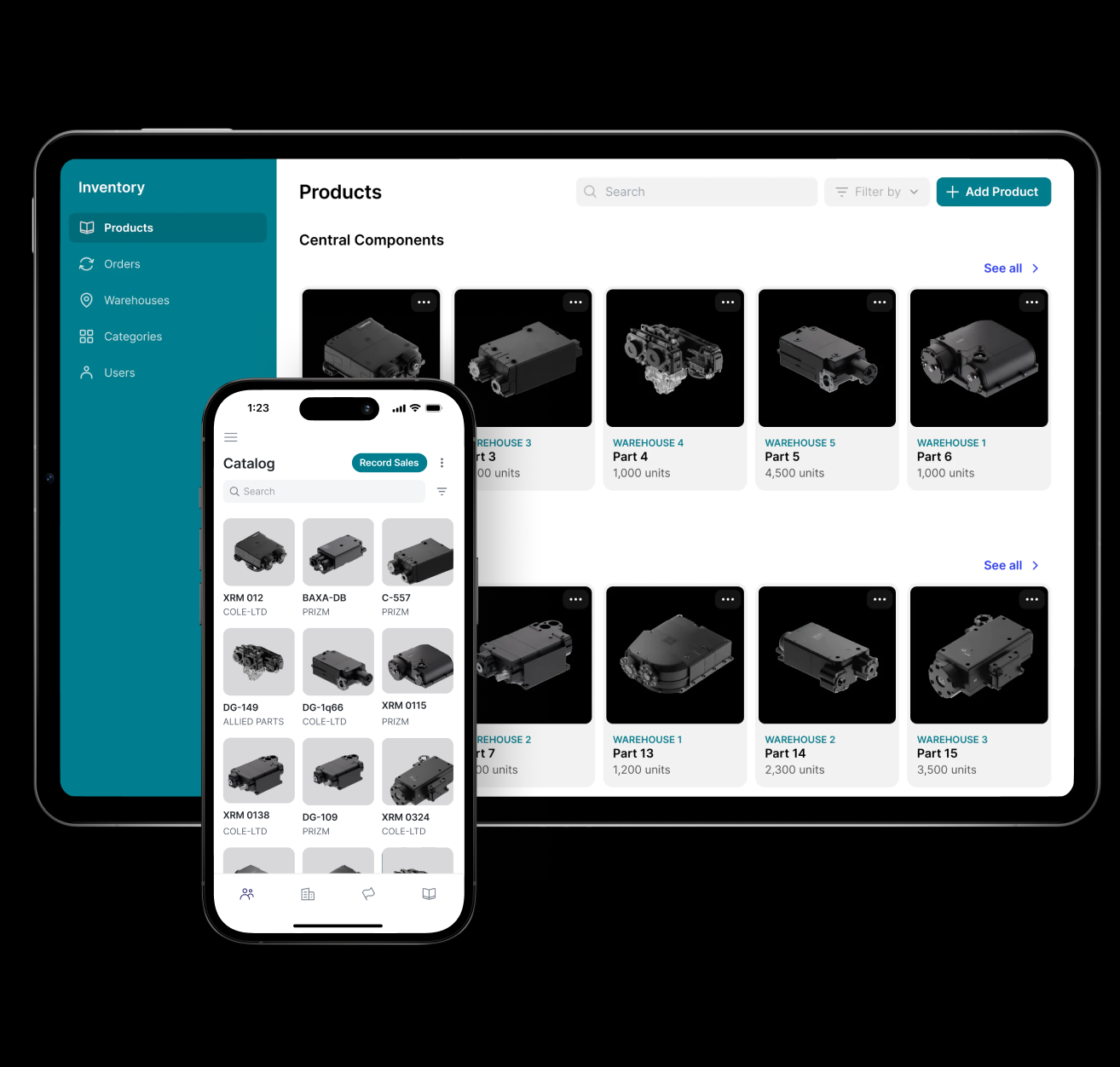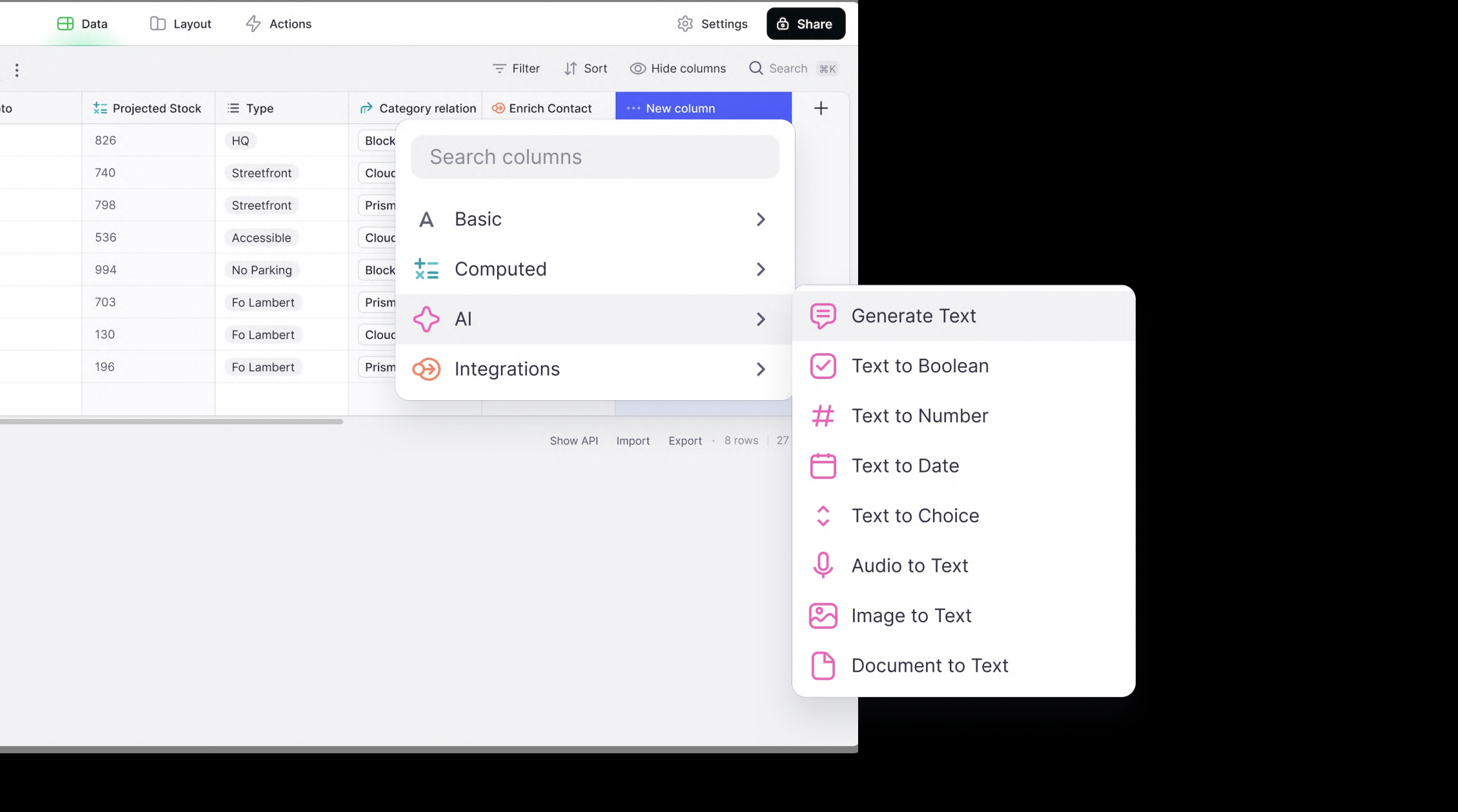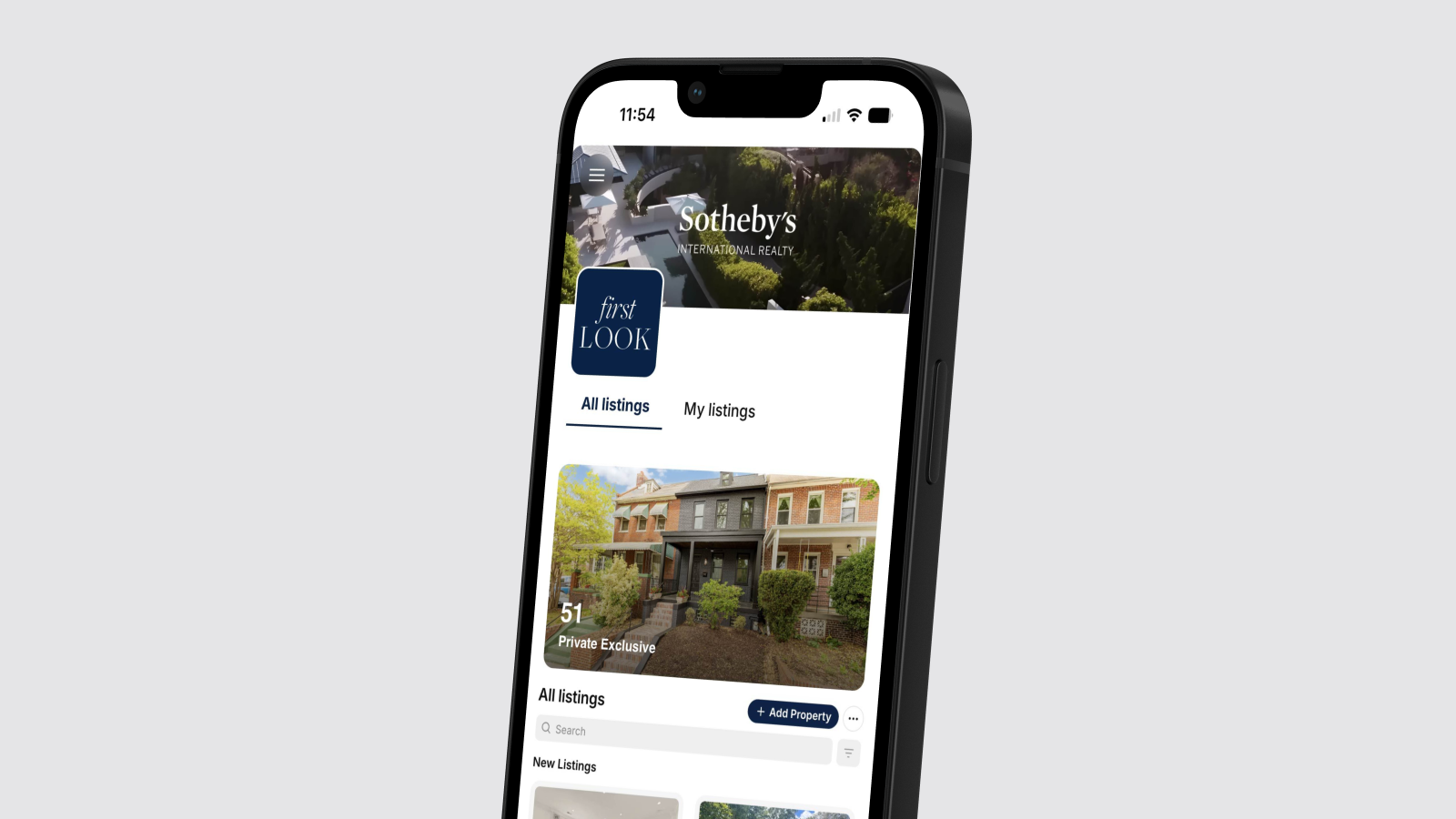Data is the lifeblood of every business. But when managed improperly, it can also be the source of your biggest headaches at work.
Many organizations rely on Google Workspace (primarily Google Sheets and Google Docs) for storing and analyzing data, but as businesses grow and their data becomes more complex, the limitations of spreadsheets become increasingly apparent.
To make the most out of your data, you need a tool that combines the flexibility of a spreadsheet with the user-friendly interface and mobile accessibility of a modern app. Glide is a no-code platform that allows anyone to create a powerful Google Sheets app. With it, you can turn scattered spreadsheet data into a user-friendly interface with the mobile accessibility of a modern app, all without writing a single line of code.
This means…
- A centralized, single source of truth, ensuring that everyone is working with the same, up-to-date information instead of relying on multiple new spreadsheets.
- A simple, user-friendly interface that presents your data in a visually appealing and intuitive manner, complete with charts, graphs, and interactive buttons for enhanced data visualization and analysis.
- Better mobile access, allowing you to view and interact with your data from your smartphone or tablet (on both Android and iOS), whether you're online or offline.
- The ability to control access and gate/protect sensitive data, ensuring that only authorized users can view or modify specific information.
- The flexibility to share data selectively, enabling you to share only necessary information with customers or allow them to add data without seeing the rest of your database.
In this article, we'll provide a step-by-step guide on how to use Glide to build your own Google Sheets app.

With a Google Sheets app, you can easily integrate data from external sources and build powerful visualizations that help you spot trends and make informed decisions, offering a level of filtering, automation, and customization that Google Sheets simply can't match.
Instead of wrestling with version control and wondering who made which changes, your team can work together in real time, viewing and editing data simultaneously from anywhere in the world. And with granular permission controls and activity tracking, you can ensure that the right people have access to the right information, keeping your data secure and organized.
How can you create an app from Google Sheets?
Depending on your requirements and available resources, there are three main options for converting a Google Sheet into an app:
- Custom code: If you have the engineering resources, you can custom-code an entire app from scratch. This gives you the greatest level of control over the look and function of your app, but it is typically expensive and time-consuming, requiring a team of software engineers and the time and budget to spare.
- Low-code development: Low-code platforms help technical users build more easily by combining code with the support of a visual development environment. They typically have a steeper learning curve and will require some coding experience to use.
- No-code app development: No-code platforms allow any user to create an app, regardless of coding experience. No-code is significantly faster than coding and less costly for businesses, even when hiring outside help. Platforms often offer additional critical features like hosting, user authentication, integrations, and automation.

What is no-code? Learn how to develop your Google Sheets app without engineers.
Read the guideHow to build a Google Sheets app with Glide
Glide is a true no-code platform that specializes in converting spreadsheets into powerful business applications and internal tools. It originated as a platform specifically for turning Google Sheets into apps, and it remains the strongest Google Sheets data connection on the market.
The following tutorial will walk you through an overview of how to build an app from beginning to end, creating a working Google Sheets app in minutes with no-code. If you want step-by-step instructions, you can explore detailed tutorials on Glide University. Here’s how the process works:
1. Get your Google Sheet ready
Your Google Sheet data is the foundation of your app and should be structured in a way that Glide can easily read and write to. Before you start building your app, make sure your data is clean. Avoid duplicate records, extra columns, or formulas you don’t need.
You can find guidance here on how to design your database. Following these data organization practices makes your data simpler to work with in Glide and improves your app’s loading speed.
2. Connect your Google Sheet
You can connect your Google Sheet directly to Glide without needing extra setup or connectors. Glide began as a tool to build apps from Google Sheets, and its strong native integration is still one of its strengths. You can start a new app in just two clicks using Google Sheets as the data source, and the data in your spreadsheet flows straight into your app.
3. Design and customize your app
The next step is to design your app and customize it using a drag-and-drop builder. Your spreadsheet will automatically build an initial layout based on your data, which is fully customizable. You can choose from pre-built layouts and components like lists, tiles, calendars, maps, and checklists to build an app that suits your specific needs.
You can further personalize your app by adding filters, sorting options, editable text components, and buttons that trigger actions like opening links, favoriting items, or submitting forms.
The WYSIWYG editor allows you to see what your app looks like to users in real time as you build it. You can build apps for desktop and mobile devices, and you only need to design it once. Your app will be mobile-optimized and automatically adapt to different screens because of Glide's built-in adaptive design.

Lastly, simply set your privacy settings, add final touches like your company’s colors and logo.
4. Publish and share your app
Finally, publish your app and share it with others by sending a link, QR code, or invite. You can download it to your mobile device using the same options. You now have a fully functional Google Sheets app that’s ready to share with your team!
If you need an app that simply displays data and allows you to add or edit information, like a basic dashboard, product catalog, or employee directory, you already have everything you need and can stop here. However, if you want to add more complex features, keep following for further steps.

How to make your Google Sheets app more powerful with Glide
Next, add advanced features, multi-step workflows, AI-powered functionality, and wider integrations to build an app capable of handling operations that need layered logic, automation, and scalability. Apps like project management apps, inventory trackers, and customer portals can all benefit from more features to help users work more effectively.
That’s what makes no-code development so powerful: while you can start with something simple, you can also scale your apps to much more complex operations.
5. Create data relations and run computations
You can connect data across your app and perform advanced calculations using Computed Columns. These columns allow you to perform the same sorts of calculations you would have created with Google Sheets formulas, directly within your app’s interface.
This speeds up your app’s performance, since Glide doesn’t have to wait for Google Sheets to perform the calculation to display real-time values.
You can use dynamic conditional logic to display values that depend on (and change with) other data on your spreadsheet. For example, if the stock for an item drops below 10, then mark it as “low stock,” or else keep it listed as “in stock.”
Computed columns keep your app fast and responsive, giving users real-time updates as values and conditions change.
6. Build automations in your app
You can create powerful automated workflows that perform tasks automatically within your app, reducing manual effort and repetitive tasks for users.
These workflows can be triggered by different types of events:
- A specific time: Your app can automatically send an email update to your client on Fridays at 10 a.m.
- When a user does something: If your field sales team adds a voice note, your app can automatically transcribe it and add the text to the record..
- When another app sends data to your spreadsheet: If you receive a new payment through Stripe or PayPal, your app can send a notification to a Slack channel.
Instead of only working when someone is manually changing spreadsheet values, your app is working for you in the background, which a spreadsheet can’t do.

7. Incorporate AI features
With Glide AI, you can provide users with AI-powered features that can generate text, transcribe audio, extract text from images, or analyze, summarize, and categorize data for you. Add these features to draft customer emails based on phone calls, generate product descriptions, analyze work tickets, and send to the appropriate inbox, or extract and categorize expenses when a user snaps a photo of a receipt from their phone.
You can transform unstructured data into structured formats using functions like Text to Date, Number, Boolean, or Choice, all without dealing with complex APIs.
With AI built in, your app goes beyond storing information to actively creating, interpreting, and organizing it.
8. Add other advanced features
Once your core app is working, you can layer on additional features to build more interactive and feature-rich apps that go beyond basic data entry.
- Add QR code or barcode scanners to reduce manual data entry. Your team can quickly scan codes in the field, warehouse, or sales floor, and all the relevant information will immediately pull into your Glide app.
- Add an audio recording button as another easy method of data entry, allowing your team to record a voice note on the go.
- Add a stopwatch to track the time a specific task takes to complete. You might want to track time if you’re billing time to a specific client or project, or to identify processes where work gets stuck to remove inefficiencies.
- Add a contact button so users can call or email directly from your app, like this Sotheby’s real estate portal.

9. Integrate the rest of your tech stack
You can connect all the different software you use to your app using Glide’s extensive library of native integrations, including Gmail, Google Calendar, Slack, Stripe, Zapier, and more. If a native integration doesn’t exist, you can build your own with Glide’s APIs
This keeps all your information in sync, reducing data silos. Simply choose the integration you need, and authorize Glide to connect your tech.
Benefits of building a Google Sheets app with Glide
Apps offer a much more user-friendly interface for interacting with your data than a spreadsheet can. If you’re collaborating with others on the same spreadsheet, sharing data outside your organization, or simply want a more visually rich environment with buttons, images, and charts, an app will improve your experience significantly.
“We went from a bunch of data sources (Microsft Excel) that didn't match, to a unified data source that did. One source of truth - and then the teams all viewed and updated that same source going forward.”
Bill Schonbrun
CarboNet COO and Co-Founder
With Glide, you can use the data you already have in Google Sheets to build apps that offer better design, better access control, and better usability.
- Quick to build: The build process is fast, even if you’ve never built an app before. Glide Agent, a built-in AI assistant, can speed things up even more by generating pages, adding components, and creating tables using natural language prompts. If you want to partner with a no-code developer, you’ll still get a much faster build than you would with traditional code.
- Work on any device: Spreadsheets are notoriously hard to use on mobile. Glide’s adaptive design means your app will look great and work smoothly on smartphones, tablets, and computers at all screen sizes. Users get a clean, functional experience on the road or at their desks, and you don’t need to design separate layouts or adjust settings to make this happen.
- Consistent, polished design: Every Glide app is built using a modern design system, so it looks professional from the start. Components are already styled and spaced, so you can focus on layout and content, not design details. You can add branding to make a professional-looking portal that can be shared inside or outside your company.
- Support rich content: A Google Sheet mostly holds numbers and text, but your app can also include images, PDFs, videos, and audio files. Instead of scanning through cells, users can browse an image gallery, watch a video walkthrough, attach a spec sheet as a PDF, or listen to a voice note. Glide’s built-in components make it easy for users to upload and view this content from any device.
- Control access to data: You get access controls that can be much more granular than what you’re able to do in a Google spreadsheet. Set sign-in requirements, assign user roles, and restrict access to specific emails or domains. This helps protect private data and avoid errors by limiting who can view or edit your app.
- Create a single source of truth: You can build an ecosystem of apps that connect to the same Google Sheet and with each other. They can even pull in data from your other software, so you get an eagle-eye view of your data. Each app can focus on a specific role, like employee, customer, or admin, while keeping all your data unified and up to date.
- Get help from Glide developers: You have access to the Glide community, where users share no-code advice and technical help. You can also learn through Glide University’s lessons and certifications, or hire Glide Experts or Agencies to build your app for you.
Build better business operations with a Google Sheets app
Turning your Google Sheet into an app with Glide gives you more control over your processes, a better way to interact with your data, and the freedom to create exactly the tools your team needs.
Start by choosing a Google Sheet you rely on often, especially if it’s shared, hard to track, or updated frequently. That’s your best candidate for your first app.
From there, you can expand to other data sources and build even more powerful tools. Glide also connects with data sources like Microsoft Excel, Airtable, and SQL databases, so you can build apps that match how your team already works. As your needs grow, you can keep building without switching platforms or starting over.
That long-term flexibility starts with what you build today. Connect your Google Sheet to Glide to turn your data into apps that make your operations more focused and effective.





